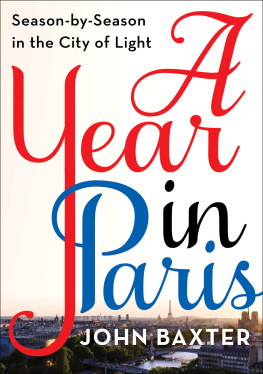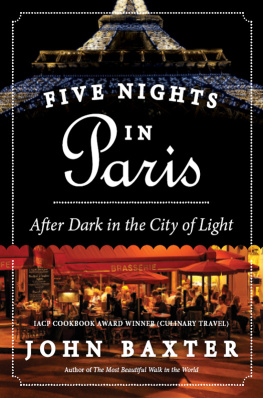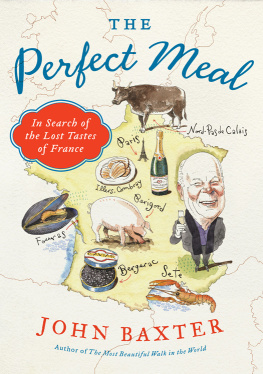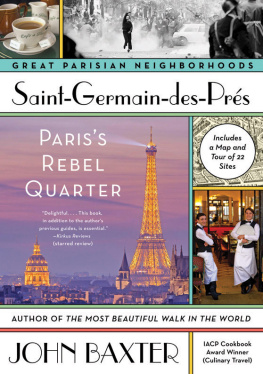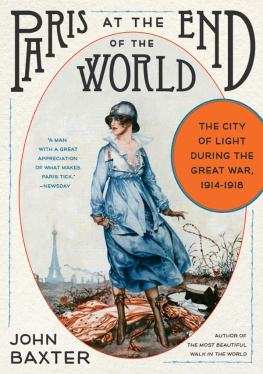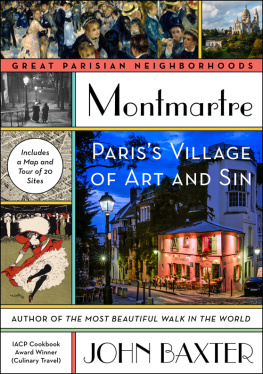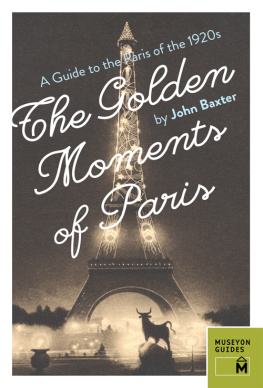Baxter - A year in Paris: season by season in the city of light
Here you can read online Baxter - A year in Paris: season by season in the city of light full text of the book (entire story) in english for free. Download pdf and epub, get meaning, cover and reviews about this ebook. City: France;Paris;Paris (France, year: 2019, publisher: HarperCollins, genre: Detective and thriller. Description of the work, (preface) as well as reviews are available. Best literature library LitArk.com created for fans of good reading and offers a wide selection of genres:
Romance novel
Science fiction
Adventure
Detective
Science
History
Home and family
Prose
Art
Politics
Computer
Non-fiction
Religion
Business
Children
Humor
Choose a favorite category and find really read worthwhile books. Enjoy immersion in the world of imagination, feel the emotions of the characters or learn something new for yourself, make an fascinating discovery.
- Book:A year in Paris: season by season in the city of light
- Author:
- Publisher:HarperCollins
- Genre:
- Year:2019
- City:France;Paris;Paris (France
- Rating:4 / 5
- Favourites:Add to favourites
- Your mark:
- 80
- 1
- 2
- 3
- 4
- 5
A year in Paris: season by season in the city of light: summary, description and annotation
We offer to read an annotation, description, summary or preface (depends on what the author of the book "A year in Paris: season by season in the city of light" wrote himself). If you haven't found the necessary information about the book — write in the comments, we will try to find it.
A year in Paris: season by season in the city of light — read online for free the complete book (whole text) full work
Below is the text of the book, divided by pages. System saving the place of the last page read, allows you to conveniently read the book "A year in Paris: season by season in the city of light" online for free, without having to search again every time where you left off. Put a bookmark, and you can go to the page where you finished reading at any time.
Font size:
Interval:
Bookmark:


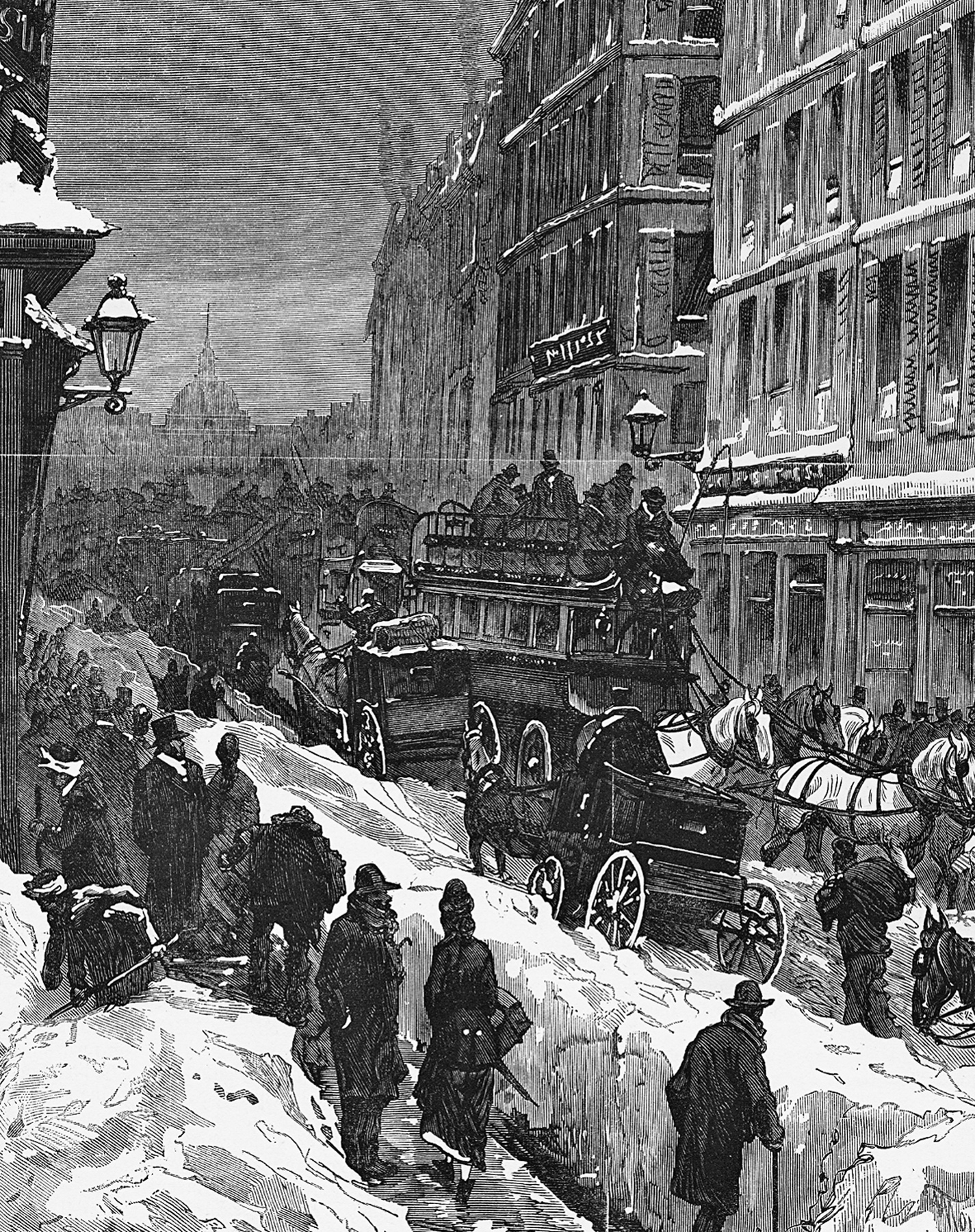
Paris in the snow, 1879.
Frat, M. Paris sous la neige. In Le Monde illustr, December 13, 1879.
To Marie-Dominique and Louise,
around whom my world turns.
Between the Swiss snows and the icy winter fogs of Germany on the one side, and the mists and rain and perpetual dampness of England on the other, her cool mild sky shot with veiled sunlight overhung a land of temperate beauty and temperate wealth. Farther north, man might grow austere or gross, farther south idle and improvident: France offered the happy mean which the poets are forever celebrating, and the French were early aware that the poets were right.
Edith Wharton, French Ways and Their Meaning
Paris 8me. Sunday, June 1990. 18C. Blue skies, and towers of white cumulus, looking as solid as cauliflowers, boiling up toward the jet stream. A light breeze carries the native odors of a city, black coffee, unfiltered tobacco, gasoline.
S OMETIMES IT SIMPLY HAPPENS . Y OU JUST KNOW . S O I CAN REMEMBER to the day when I first learned of the love affair between Paris and the seasons.
I was, I suppose, in a state of hypersensitivity, attuned to the subtlest of signals. Just a year before I had been happily settled in Los Angeles, living at last in the city Id selected as my spiritual home after reading the novels of Raymond Chandler in adolescence and seeing the films of Billy Wilder. The years in Europe and my native Australia were like old snapshots, colors faded by the Californian sun. That past and those people no longer existed. I woke each morning to a perpetual present in the city acknowledged as the capital of Now.
My fantasy survived a little more than a year. Then a woman reappeared from that past, and overnight I just knewthat imperative againthat in defiance of all logic I had to follow her to France, of whose language I spoke barely a word and where I knew no one but her.
Seven months had passed, and I still moved around Paris with the caution of an earthquake survivor, hand never far from a railing, not sure the ground wouldnt once again open beneath my feet.
A friend had phoned that Sunday morning in June 1990 to babble, You must take a look at the Champs-lyses today. You wont believe it!
The more I pressed him about what Id see, the more evasive he became. I dont want to ruin it. Just... go!
So as an escalator at the Franklin D. Roosevelt metro station carried me up to street level, I still had no idea what to expect.
Emerging into the sunlight, I looked up the hill toward the Arc de Triomphe... and found that my friend was right. I didnt believe it.
Overnight, one of the widest and busiest avenues in Paris had become a field of wheat. Grain, waist-high, filled the street to the Arc de Triomphe at the top of the hill.
On both sides of the avenue the pavement was clear, and cross streets had been kept open for emergency vehicles. In a few small enclosures scattered around the edges, people demonstrated country crafts: basket weaving, sheep shearing. Otherwise, there was just wheat.
Steel barriers enclosed the field. I grabbed one and, resisting the pull of the crowd pouring up behind me from the metro, hung on as I took in the sight. A man in a shapeless smock, a straw hat, and bare feet came out of a cross street, leading a cart pulled by two oxen. He was chewing a stalk of wheat and appeared unconcerned at blocking a thoroughfare where on a normal day it was almost a capital offense to pause, let alone park.
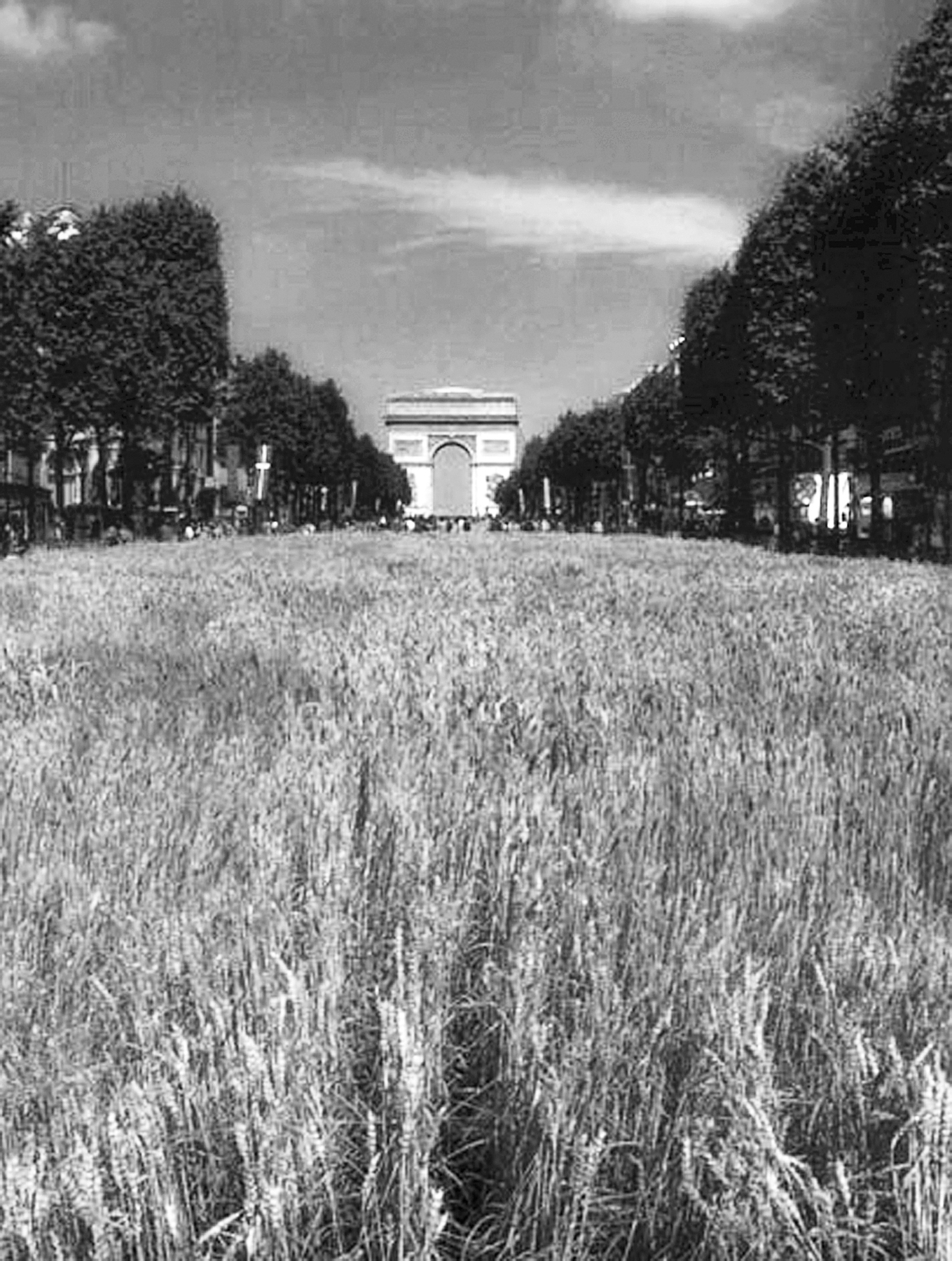
The Champs-lyses under wheat, 1990.
Photograph by the author.
I stayed there for the rest of the afternoon, caught in an eddy of time that returned Paris 1990 to an era three centuries in the past, when no laws applied except those of the seasons. The Arc de Triomphe dominated the hilltop, celebrating the victories of Napolon Bonaparte, but this was no day for emperors. The wheat, bowing lazily in the breeze, put worldly pomp in its place. One saw why Katharine Lee Bates, who wrote the lyrics of America the Beautiful, specified amber waves of grain as an element of the new nation. No wonder the presidential hopes of Michael Dukakis never recovered from his 1989 suggestion to Iowas corn farmers that they replant with such boutique vegetables as Belgian endive. Fields of grain were the irreducible minimum of a civilization, the rock on which it stood.
Implicit in the presence of this field here today in the heart of Paris was the message that France, with the same population as Britain but three times the area, belonged to those who controlled the land. Defy them, as Louis XVI had done in 1789, and you risked being handed your head.
At that time of year, the setting sun lingers for a few minutes in the very center of the Arc de Triomphe, sending a blaze of light the length of the Champs-lyses. As it did so, engines growled on the other side of the arch. A minute later, a line of combine harvesters belching smoke lumbered into sight and crawled toward us, devouring the wheat.
In their wake rose a golden cloud of dust from which materialized hundreds of young men and women, each carrying a spear shaped like a wheat stalk. From the watchers rose a collective sigh of satisfaction and awe.
That nights television news explained that the day had been a demonstration by 1,500 farmers on behalf of French agriculture. Three thousand six hundred tons of wheat, grown to maturity around Paris on pallets, were trucked in overnight to stun us three hundred thousand who came to gawk.
Politics had provided the pretext, but one sensed that the farmers would have staged this show just for the pleasure of it. They had gone into the streets often in the past, sometimes to celebrate but more often, as in this case, to warn. The beliefs behind such manifestations were already ancient when Christianity came squalling into the world. Between France, the land, and the seasons, it was a matter of blood.
Richebourg, ledeFrance. December 1990. 1 degree below zero C. Hailstones rattle like gravel against double layers of glass. Beyond, in a gray murk of nearhorizontal freezing rain, ancient trees, trunks sodden and black, lurk like gallows.
Had the weather been this bad in Bethlehem, Jesus would have imitated the ancient gods and waited until spring to be born.
S IX MONTHS LATER , I TRIED TO RECAPTURE A SENSE OF THAT DAY: the glare; the grains dry, vegetal smell; the sting of the sun through my thin jacket. It was hopeless. However warm the memory, the chill of December quenched it.
For almost a week storms had battered the sixteenthcentury house in Richebourg, one hundred kilometers from Paris, where we were spending the holidays.
The house, my motherinlaws country home, was an unexpected dividend of marrying into an old French family. Handhewn chestnut beams, already old when Bonaparte became emperor, supported this onetime farmhouse that in its indestructibility could have served as a metaphor for Frances landowners, the backbone of the nation.
The church and the aristocracy, known as the First and Second Estates, barely survived the revolution of 1789, but if that bloody conflict had a winner, it was the Third Estate: the landowners, farmers, and people in business
Font size:
Interval:
Bookmark:
Similar books «A year in Paris: season by season in the city of light»
Look at similar books to A year in Paris: season by season in the city of light. We have selected literature similar in name and meaning in the hope of providing readers with more options to find new, interesting, not yet read works.
Discussion, reviews of the book A year in Paris: season by season in the city of light and just readers' own opinions. Leave your comments, write what you think about the work, its meaning or the main characters. Specify what exactly you liked and what you didn't like, and why you think so.

